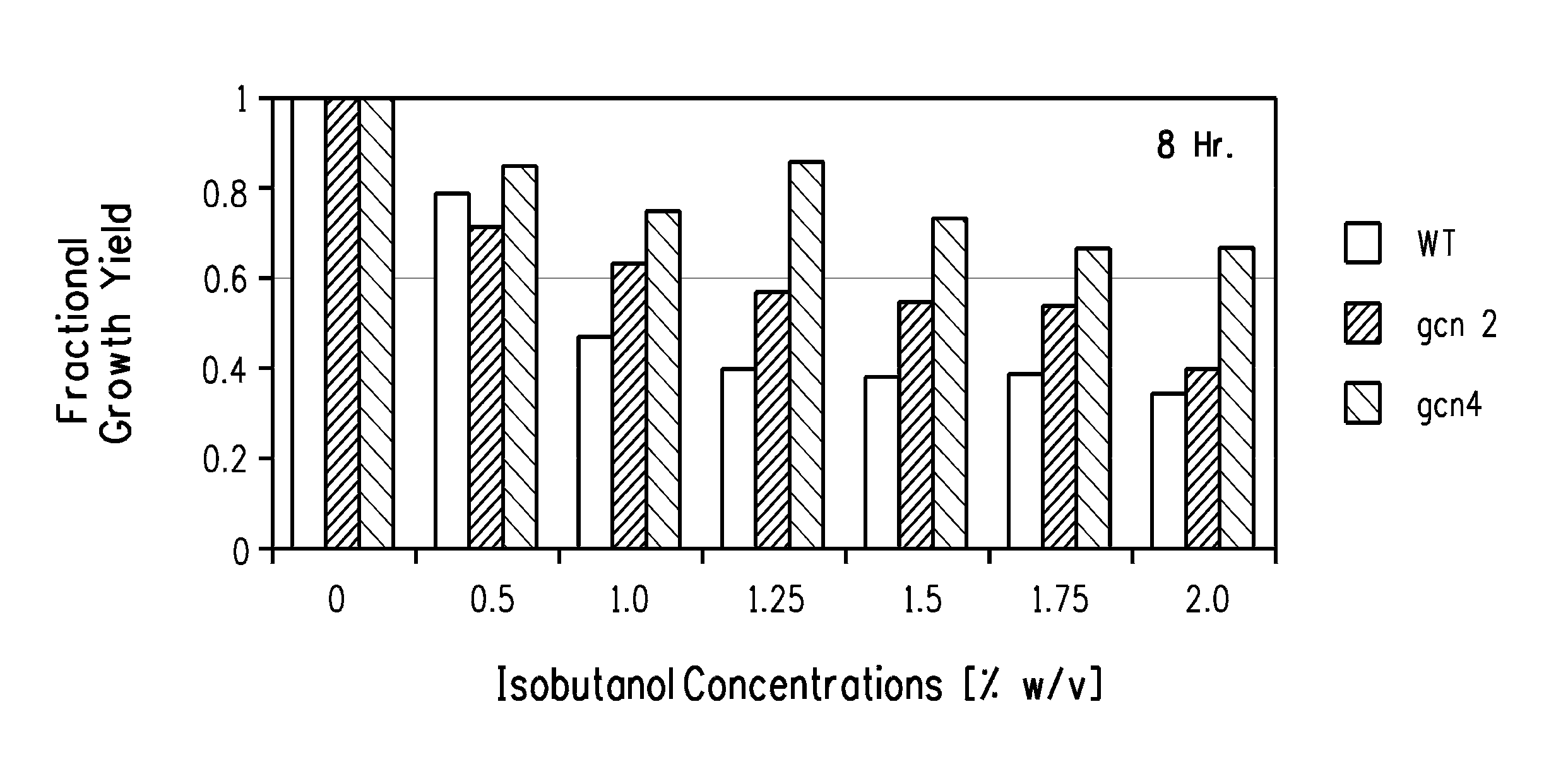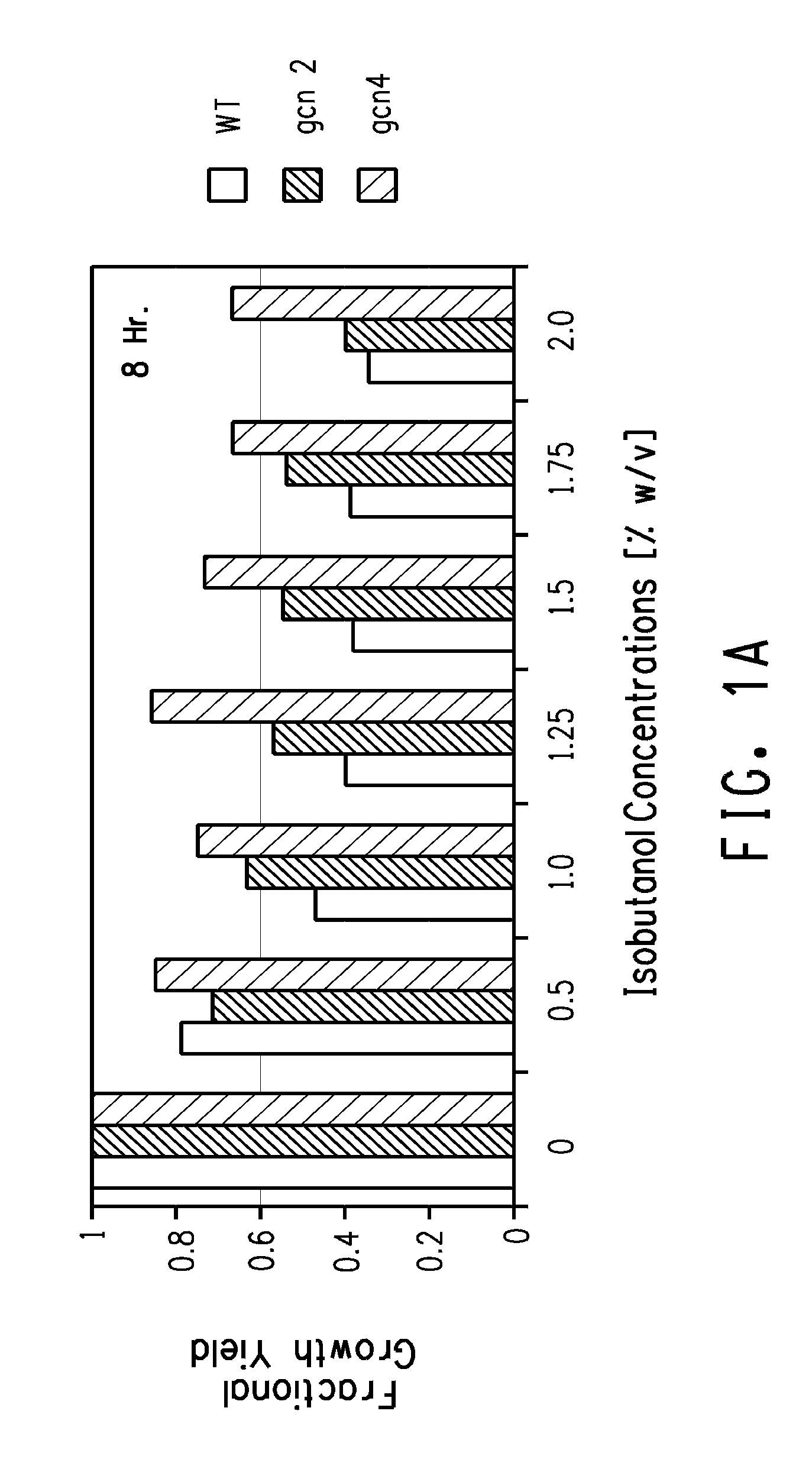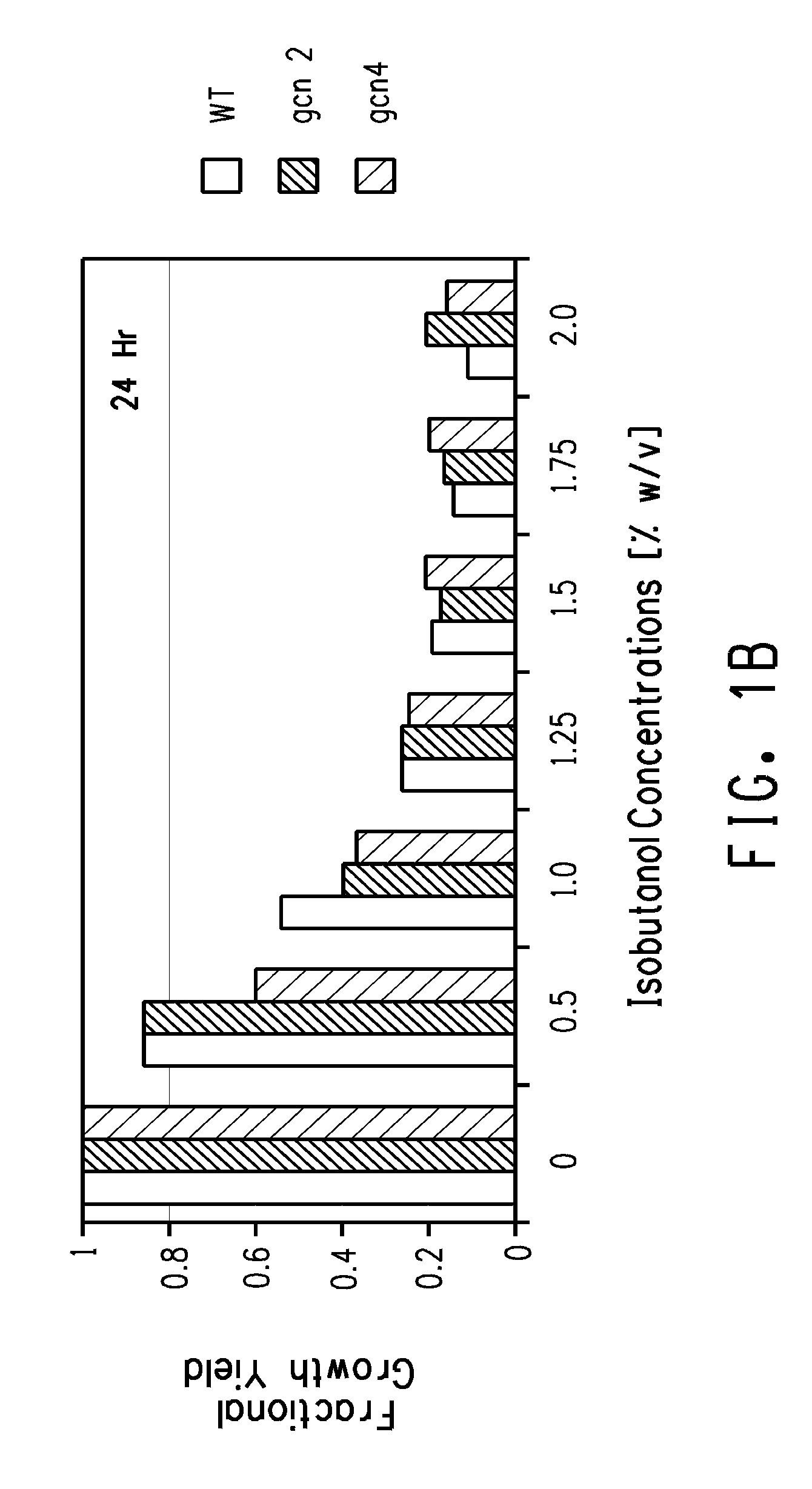Yeast strain for production of four carbon alcohols
a technology of yeast strains and alcohols, applied in the field of microbiology and genetic engineering, can solve the problems of low yield of fusel oil and/or its components, high cost, and inability to meet the needs of consumers, and achieve the effect of reducing the respons
- Summary
- Abstract
- Description
- Claims
- Application Information
AI Technical Summary
Benefits of technology
Problems solved by technology
Method used
Image
Examples
example 1
Butanol Tolerance in qcn2 and qcn4 Mutants
[0171]GCN2 gene and GCN4 gene deletion mutants of the diploid a / αSaccharomyces cerevisiae strain BY4743 (Brachmann et al. (Yeast 14:115-132 (1998)) are available in a nearly complete, ordered deletion strain collection (Giaever et al. Nature 418, 387-391 (2002); Saccharomyces Genome Deletion Project). Cells of the GCN2 gene and GCN4 gene deletion mutants were grown overnight from a single colony on a YPD plate in either YPD or YVCM medium (recipes below) in a 14 ml Falcon tube at 30° C. with shaking at 250 rpm. Overnight cultures were diluted 1:100 (2 ml to 200 ml) in the same medium and growth was monitored every 60 minutes until 1 doubling had occurred. At that point the cultures were split into 25 ml samples that were dispensed to separate 125 ml plastic flasks. Challenging concentrations of isobutanol ranging between 0.5% and 2% w / v were added to all but one flask of each culture that served as the positive control. Control and challenge...
example 2
Expression of Isobutanol Pathway Genes in Saccharomyces cerevisiae
[0175]To express isobutanol pathway genes in Saccharomyces cerevisiae, a number of E. coli-yeast shuttle vectors were constructed. A PCR approach (Yu, et al. Fungal Genet. Biol. 41:973-981(2004)) was used to fuse genes with yeast promoters and terminators. Specifically, the GPD promoter (SEQ ID NO:76) and CYC1 terminator (SEQ ID NO:77) were fused to the alsS gene from Bacillus subtilis (SEQ ID NO:41), the FBA promoter (SEQ ID NO:78) and CYC1 terminator were fused to the ILV5 gene from S. cerevisiae (SEQ ID NO:43), the ADH1 promoter (SEQ ID NO:79) and ADH1 terminator (SEQ ID NO:80) were fused to the ILV3 gene from S. cerevisiae (SEQ ID NO:47), and the GPM promoter (SEQ ID NO:81) and ADH1 terminator were fused to the kivD gene from Lactococcus lactis (SEQ ID NO:35). The primers, given in Table 5, were designed to include restriction sites for cloning promoter / gene / terminator products into E. coli-yeast shuttle vectors ...
example 3
Prophetic
Production of Isobutanol Using Tolerant Saccharomyces cerevisiae Strain
[0180]The starting strain for this work is BY4741 (Brachmann, et al. Yeast. 14: 115-132 (1998)) and its Δbat2 derivative, YJR148W BY4741, mating type a (6939) available from the ATCC (#406939) with the genotype MATa his3delta1 leu2delta0 met15delta0 ura3delta0 deltaTWT2. bat2 encodes the cytosolic branched-chain amino acid aminotransferase, The deletion of bat2 in combination with the URA3 deletion allows growth in the absence of uracil to be used as a selection for the presence of a URA3 insertion.
[0181]First ΔGCN2 and ΔGCN4 derivatives are made using the ATCC strain #406939. This is accomplished by a gene replacement strategy commonly used in yeast in which a URA3+ allele is used as a selectable marker for a GCN insertion-deletion allele in which URA3+ is integrated in the genome along with flanking direct repeat sequences replacing the sequence targeted for deletion. Subsequently a recombination event...
PUM
| Property | Measurement | Unit |
|---|---|---|
| temperature | aaaaa | aaaaa |
| temperature | aaaaa | aaaaa |
| temperature | aaaaa | aaaaa |
Abstract
Description
Claims
Application Information
 Login to View More
Login to View More - R&D
- Intellectual Property
- Life Sciences
- Materials
- Tech Scout
- Unparalleled Data Quality
- Higher Quality Content
- 60% Fewer Hallucinations
Browse by: Latest US Patents, China's latest patents, Technical Efficacy Thesaurus, Application Domain, Technology Topic, Popular Technical Reports.
© 2025 PatSnap. All rights reserved.Legal|Privacy policy|Modern Slavery Act Transparency Statement|Sitemap|About US| Contact US: help@patsnap.com



